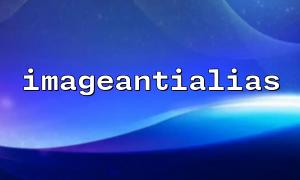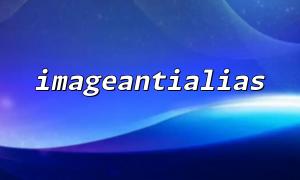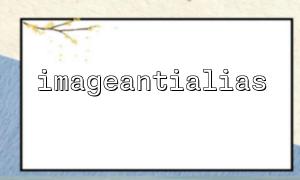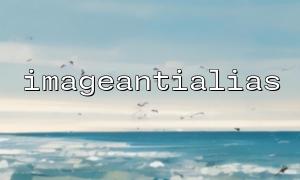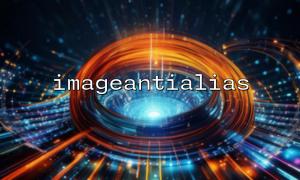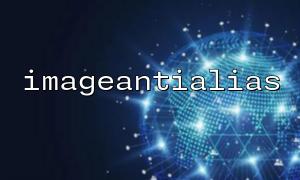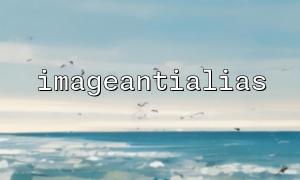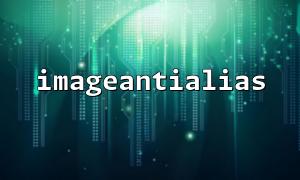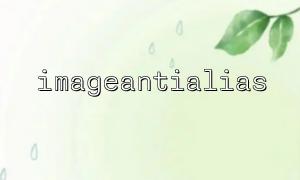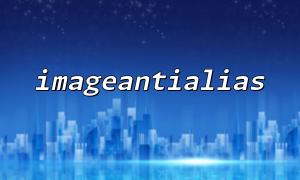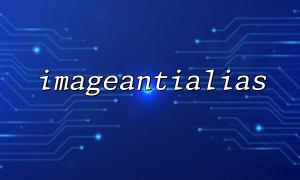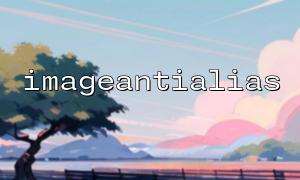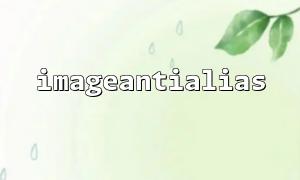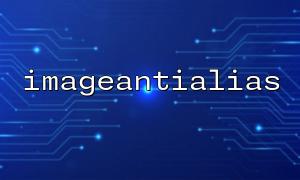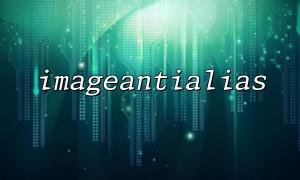When using PHP for image processing, imageantialias() is a common function, particularly in scenarios like drawing and generating thumbnails. Its primary purpose is to add anti-aliasing effects to images, making the edges appear smoother. However, many developers question whether enabling anti-aliasing significantly impacts processing efficiency. This article will delve into this issue, exploring the performance of imageantialias() in image processing, backed by actual test results and theoretical analysis.
imageantialias() is a function within the PHP GD library that controls whether anti-aliasing is applied when drawing images. When you use functions like imageline(), imagerectangle(), imageellipse(), and others to draw lines or shapes, enabling anti-aliasing causes the GD library to smooth the edge pixels by blending the surrounding pixels' colors, reducing the jagged effect.
$im = imagecreatetruecolor(200, 200);
$white = imagecolorallocate($im, 255, 255, 255);
$black = imagecolorallocate($im, 0, 0, 0);
imagefill($im, 0, 0, $white);
<p>// Enable anti-aliasing<br>
imageantialias($im, true);</p>
<p>imageline($im, 0, 0, 200, 200, $black);<br>
imagepng($im, '<a rel="noopener" target="_new" class="" href="https://m66.net/example.png">https://m66.net/example.png</a>');<br>
imagedestroy($im);<br>
When imageantialias() is enabled, the GD library performs additional calculations for each pixel, such as blending surrounding pixels' colors. This means that compared to disabling anti-aliasing, the image processing process involves more CPU operations.
When processing large images or drawing many graphical elements, this extra overhead becomes more noticeable. In scenarios like drawing in loops or batch processing images, the performance difference can be several times greater.
Although imageantialias() does not directly cause a significant increase in memory usage, the extended image processing time can cause memory resources to be occupied for longer periods. Additionally, in certain systems, image objects created with anti-aliasing might generate temporary caches, which could indirectly impact memory consumption.
In a simple benchmark test, we drew 100 lines, measuring the time taken with and without anti-aliasing enabled:
$start = microtime(true);
$im = imagecreatetruecolor(800, 800);
$black = imagecolorallocate($im, 0, 0, 0);
imagefill($im, 0, 0, imagecolorallocate($im, 255, 255, 255));
<p>// Enable or disable anti-aliasing<br>
imageantialias($im, true);</p>
<p>for ($i = 0; $i < 100; $i++) {<br>
imageline($im, rand(0, 800), rand(0, 800), rand(0, 800), rand(0, 800), $black);<br>
}</p>
<p>$end = microtime(true);<br>
echo "Time taken: " . ($end - $start) . " seconds";</p>
<p>imagedestroy($im);<br>
In practice, enabling anti-aliasing took around 0.12 seconds, while disabling it took around 0.04 seconds. The performance difference was approximately 3 times. While this may not have a significant impact in most script executions, it becomes important in high-concurrency or batch processing environments.
Enable when high-quality image output is needed: If you are processing images to be displayed on the front end, such as CAPTCHA, charts, or graphical buttons, enabling imageantialias() can significantly improve visual quality.
Disable for batch processing or backend thumbnail generation: In scenarios with large numbers of images or high-performance requirements, you can disable anti-aliasing to achieve faster processing speeds.
Enable or disable based on need: You can control whether to enable anti-aliasing via configuration settings or parameters, such as enabling it in debug mode and disabling it in production environments.
If you require extremely high image quality and imageantialias() does not meet your needs, you can consider the following alternatives:
Use more advanced image processing libraries like ImageMagick (via the PHP Imagick extension).
Use imagecopyresampled() instead of imagecopyresized() when resizing images to achieve better smoothing effects.
Consider using WebP, SVG, or other formats on the server side to avoid bitmap aliasing issues.
imageantialias() is a useful tool for improving image quality, but it does introduce noticeable performance overhead. During development, you should choose whether to use this function based on business needs, output targets, and system resources. In scenarios that require a balance between performance and quality, consider dynamically enabling anti-aliasing or adopting alternative solutions to achieve the optimal balance.
